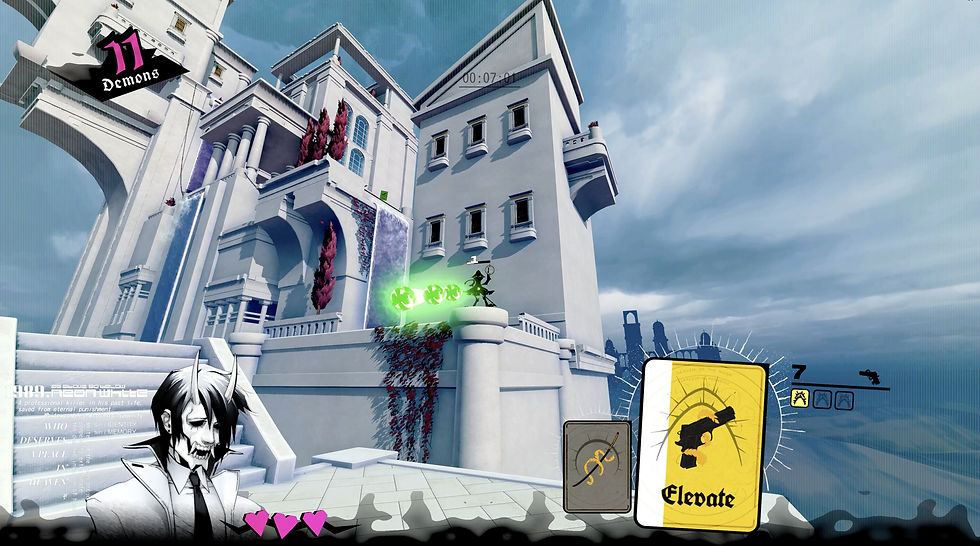Balatro or: How I Learned to Stop Worrying and Love the Card Game
- Jonathan Frankel
- Jan 21
- 4 min read
by: Jonathan Frankel

If you told me a year ago that an indie card-based roguelike would wind up being one of my favorite games of 2024 over the usual AAA goliaths, I would’ve raised an eyebrow. Any time a game introduces cards as a central mechanic, my eyes start to glaze over and I suddenly feel like I’ve been hit by a tranquilizer dart. Okay, that’s not entirely true. I dabbled in Gwent during my second playthrough of The Witcher 3 and I quite enjoyed my time spent with Queen’s Blood earlier last year in Final Fantasy VII Rebirth, but huge emphasis on “dabbled”.
Over the past few years, indies like Slay the Spire, Inscryption, and Loop Hero have stolen the hearts of countless games journalists while I sat on my high horse wondering what the big deal is. Even a game like Neon White, a high-octane, twitchy platforming title that should be right up my alley, lost me at the mere sight of a card.

See, I’ve always had a nasty habit of underestimating myself (which is probably the reason I’m still unemployed after a grueling past 10 months). I tend to overthink everything and convince myself that I’m not good enough for anything. Don’t worry, I’m working through it with my therapist. I’ve never really played poker––don’t know the rules, and at this point I’m too afraid to ask––so naturally I felt intimidated by Balatro’s imposing standard 52 deck.
So when solo developer LocalThunk’s Balatro came out early last year and had every podcast host from Giant Bomb to Polygon in a frenzy, my ignorant ass dismissed the acclaim as pretentious virtue signaling, as if no one would dare offer a dissenting opinion on the new de facto indie darling lest they get blacklisted from the industry. Deep down though, I knew that this conclusion came from a place of good ol’ fashioned envy. Surely the hype would subside in the wake of the rest of the year’s heavy hitters, I thought.
But this wasn’t just a flash in the pan. Praise for Balatro persisted throughout the year thus making it harder and harder to ignore. Gaming pundits I normally align with started describing their own journeys with the game at the behest of their colleagues insisting that “this is more than just a card game, man! It’s a way of life!” Still, my self-deprecation discouraged me from taking the requisite $15 plunge and risk being “too stupid” to enjoy it.
It wasn’t until the game finally arrived on its rightful platform at the end of September that my curiosity got the better of me. Though I rarely play games on mobile, I am a subscriber to Apple Arcade, meaning I could try out Balatro free of charge (other than, you know, the monthly fee). Thank you, poor financial choices! I downloaded it one lazy afternoon, and long story short, I forgot to eat dinner that day.

After the initial hump of figuring out which cards make a hand, the difference between a rank and a suit (yes, I really was that clueless), and familiarizing myself with the function-over-fashion UI, I was totally entranced by it. Every little detail from the mesmerizing, endlessly looping music accompanied by the hypnotic background, to the little tactile vibrations caused by selecting, playing, or discarding coalesced into an intoxicating experience I didn’t know was possible to create. Who knew rectangular pieces of virtual plastic could be so satisfying to behold? Discovering and unlocking new Jokers and seeing how, like clockwork, every single piece of Balatro fits together so harmoniously, further convinced me that this might be the perfect game, rivaling only the likes of Tetris. Now that I think about it, somebody needs to make a Tetris roguelike STAT.
When you boil it down to its raw essence, Balatro is really just a game about making a number go up. Granted you could say that about a lot of games, but its minimalistic nature removes all pretense from the equation, leaving just you and the numbers. I was not prepared for how compelling this would be. Assembling that perfect deck with just the right Jokers and watching your score multiplier double, triple, quadruple, and quadruple again until the scoreboard literally sets on fire hits like digital crack every single time. Even when a particularly pesky Boss Blind unceremoniously ends a good run, jumping back in is equally exciting to see what other ways you can find to utterly break the game.

Part of me is thankful that Apple Arcade doesn’t keep track of hours played, because I’m not sure I want to know how much of my free time these past 4-5 months has been spent with Jimbo. It’s even prompted me to check out some of the card-darlings of years past. Maybe “addiction” is too loaded a word to use in this case, but if I were to start up Slay the Spire (also conveniently available in the App Store), that could very well be the end of my life.
My girlfriend will occasionally catch me playing Balatro when we’re hanging out, give me a puzzled look, and question what could possibly make a card game so addictive. Oh, to be so blissfully naïve. Now, if you’ll excuse me, I have to go beat a purple stake with the magic deck.



Comments